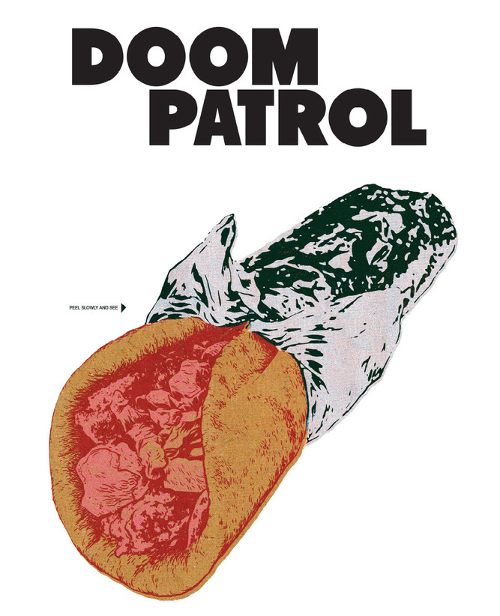First, some context. The team of misfit superheroes known as Doom Patrol were created by Arnold Drake in 1963 for the silver-age DC comics title My Greatest Adventure. Their most infamous incarnation came 25 years later in 1988, when Grant Morrison took over writing the title for 45 issues, transforming it into an absurdist cult favourite of the new ‘modern’ comics era. The team have gone through a number of iterations in the years since, with a fluid roster of members, although none have really found a wide audience to date. This is all incidental information, since I had read absolutely none of these comics before picking up the 2016 relaunch of Doom Patrol, masterminded by writer Gerard Way as the flagship title of his own experimental DC imprint Young Animal.

Gerard Way does a neat job of acknowledging the modern history of the main team, without making it required knowledge; mainly by placing the focus of the book on a new creation of his own, Emergency Medic with a secret origin, Casey Brinke. If anything, the classic characters, including Robotman, Negative Man and Niles Caulder, have been relegated to supporting characters in their own book, which may disappoint returning readers, but I reckon newcomers will be delighted in the gradual reveal of Casey as reluctant figurehead of the team that forms around her.

The first two volumes (Brick by Brick and Nada) are really a tapestry of 3 or 4 absurd subplots intertwined, featuring 9 or 10 protagonists, told over 11 issues (plus 1 epilogue). As such, there isn’t enough time to flesh out many of the characters, and it’s hard to even pinpoint any particularly prevalent themes (apart perhaps for food, as a euphemism for consumerism and hallucinogenic drugs). It’s all really a celebration of the insanity of super-hero storytelling, and the eclectic joy of finding your place amongst others that don’t fit in. In artist Nick Derrington, Way has a perfect creative partner, with an animated style that matches the bright boldness of the plot,

Everything is largely tied up within the first 11 issues, although a number of dangling plot threads were carried over to the Young Animal/ DC crossover series The Milk Wars in 2018; but I wouldn’t give that a particularly high recomendation. A meeting of the ideosyncratic Doom Patrol with the iconic Justice League is a nice idea in principle, but the editorially-driven plotting and on-the-nose script only served to highlight that being absurd is not nearly as effortless as Way and Derrington managed to make it appear.

